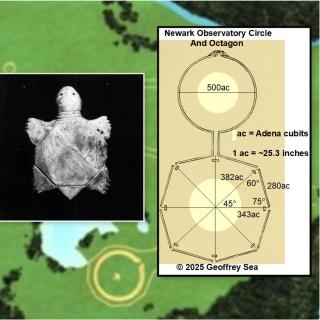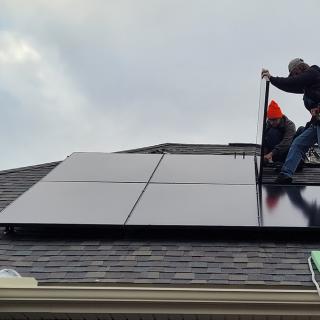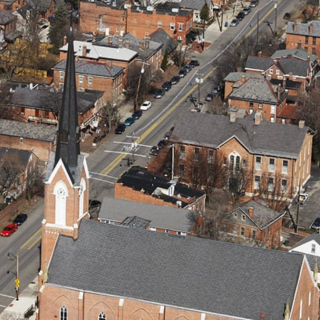Nearly 90 percent of what we know today as the state of Ohio was once old growth hardwood forest. The Appalachian southeastern corner of the state was a particularly diverse bioregion.
During the 18th and 19th centuries European settlers clear cut and mined the area beyond recognition, leaving behind a wasteland of barren, eroding hills. During the Great Depression, President Franklin Delano Roosevelt established the Civilian Conservation Corps (CCC), a public work relief program that employed men aged 18-25 to do manual labor related to conservation and development of natural resources such as planting trees, constructing trails, roads, and lodges, fighting wildfires and controlling erosion. Ohio’s legislature agreed to allow the federal government to purchase land in the state for the purpose of establishing a national forest and the Forest Service was tasked with restoring the land.
Today the Wayne National Forest, which comprises three non-contiguous units, Athens, Ironton and Marietta, each a patchwork of public and private land, provides vital habitat for wildlife, including a number of threatened and endangered species, and recreational opportunities including hiking, camping, kayaking, mountain biking, horseback riding, hunting and fishing for people around the region.
Last fall the Bureau of Land Management (BLM) announced that it planned to auction off up to 40,000 acres of the 60,000 acre Marietta Unit of Ohio’s only national forest to gas and oil companies. While extraction has been permitted on US Forest Service (USFS) land since the passage of The Federal Land Policy and Management Act of 1976, and legacy wells are not uncommon in WNF, the new leases would allow horizontal hydraulic fracturing, or fracking, a provision of a 2012 update to BLM’s Wayne National Forest Land and Resource Management Plan.
This method of fracking requires significantly more clear cutting and development than conventional drilling. Unlike conventional wells, horizontal fracking wells require concrete pads that are typically about five acres in size, but can be larger.
Between two and six million gallons of water (often pulled directly from natural waterways at no cost to the gas and oil company) are required each time a well is fracked. The water is mixed with salt and undisclosed chemicals (according to the industry, this is proprietary information) and forced underground to fracture the shale to release natural gas. During this process the water picks up naturally occurring radioactive materials. The toxic wastewater or “brine,” as it has been euphemistically dubbed by the industry, is then collected, reused and eventually transported by truck to an injection well for storage and is permanently removed from the water cycle.
Natural gas has been promoted as a transition fuel that will help mitigate climate change, one of the greatest threats to forests worldwide, by reducing carbon emissions as we move to renewables, but the inevitable methane leaks that occur during extraction, transport and storage are detrimental to wildlife and, while it does not stay in the atmosphere as long as carbon, methane is a significantly more potent greenhouse gas in the short term.
No new studies have been conducted on the impact this could have on WNF’s flora and fauna, yet the BLM claims that going forward with this plan will have “no significant impact.”
Fernow Experimental Forest lies in West Virginia’s Monongahela National Forest, about 140 miles southeast of the Marietta Unit of WNF. A report entitled Effects of Development of a Natural Gas Well and Associated Pipeline on the Natural and Scientific Resources of the Fernow Experimental Forest published in 2011 and available on USFS’s website, documents immediate loss of ground vegetation and extensive loss of mature trees over a two year period after being sprayed with fracking wastewater.Unsurprisingly, USFS argues these findings should not be used to determine how other areas may be impacted:
Because of limitations to the data, it is not appropriate to extrapolate our findings and observations to other mineral development sites across the region. However, such documentation of natural gas development effects on natural resources in central Appalachian hardwood forests is needed and can provide us with useful insights.
If nothing else, the findings of this study demonstrate the need for more data before a decision ought to be made regarding the impact of fracking on a natural area such as Ohio’s only national forest.
Despite public outcry, including a petition with more than 100,000 signatures, BLM moved forward with their plan and, so far, has held two auctions, resulting in leases of about 2,000 acres of WNF land to gas and oil companies.
Many of the land parcels that have been leased or are being considered for lease lie along the Little Muskingum River, a tributary of the Ohio River popular with kayakers. Lamping Homestead, a popular recreation area that includes a lake, trails, campsites, and a picnic area, is also in one of the parcels at risk.
The threat to these natural areas is upsetting to outdoors enthusiasts and conservationists who visit, but it’s particularly devastating for those who live in the area and escape to WNF regularly.
Jim Harrigan has lived along the Ohio River all his life and since childhood has been hunting and fishing in the surrounding forests and tributaries. He grew up in Powhatan Point, a town with a population of about 1500 in Belmont County, but moved 20 miles south to Sardis, a town about a third its size, in Monroe county in 1996, so that he and his wife could be closer to her parents. He began hunting in and around the Marietta Unit of WNF as a teenager in the late 70s. He also taught his daughter to hunt in the area.
Jim feels a deep connection to the land and waterways and is happiest when he’s in the outdoors. “I’ve got a lot of memories of different places I’ve killed deer...growing up and trying to venture into different places…There’s just nothing like being in a wooded area where it’s just you and nature and the animals doing what they do,” he says.
Jim is an accountant and he first learned of the Bureau of Land Management’s plans to begin leasing WNF land for fracking a few months ago from one of his clients. “I went online and looked everything up and got sick to my stomach in fear for future generations. How will they have anything when it comes to wildlife and beauty? It’s going to be gone,” Jim says.
Jim has watched the area change dramatically as pipelines and well pads have gone in all around him. What was once a quiet town now has heavy construction and truck traffic day and night. He says he knows the companies have the right to develop the area, but he fears there will be more incidents like the Statoil well pad fire in 2014 that contaminated Opossum Creek and killed 70,000 fish. Jim used to fish in Opossum Creek. Now he sticks to interior lakes, which he believes are cleaner, but he worries that with the increasing gas and oil development in the area, these, too, may become contaminated.
Jim’s home in Sardis is just up the road from the spot where Energy Transfer Partners’ (ETP) Rover Pipeline crosses the Ohio River and ascends into the hills within WNF’s Proclamation Boundary, where it will connect with frack operations and transport the gas across state lines and into Canada. Still under construction, Rover has already had accidents in Ohio, including a spill of more than 2 million gallons of drilling fluid containing diesel into a wetland area in Stark County, about 100 miles north of Monroe County. The Ohio Environmental Protection Agency and Federal Energy Regulatory Commission have temporarily halted Rover’s construction and fined ETP $430,000, which ETP is refusing to pay. ETP still hopes to complete the 713 mile pipeline by November.
In response to the first BLM auction of WNF land, four non-profit conservation organizations, The Center for Biological Diversity (CBD), Heartwood, The Ohio Environmental Council and The Sierra Club filed a lawsuit in May of this year, which, according to a press release from CBD, “charges that the agencies failed to analyze threats to public health, endangered species and the climate before auctioning off more than 670 acres of forest land for large-scale, high-volume fracking.”
Concerned citizens and grassroots organizations are working to raise awareness about the threat and build support to oppose Rover and fracking in WNF. Keep Wayne Wild, a volunteer-run organization dedicated to celebrating and protecting WNF, is doing outreach around the region and organizing events to encourage people to visit the Marietta Unit of WNF and learn about its value. A coalition of forest and water protectors are starting a camp called Defend the Wayne to develop an intentional community that will stand in opposition to these threats to WNF. You can learn more about these efforts and how to support them and get involved at www.KeepWayneWild.com and www.DefendWayneForest.com.



